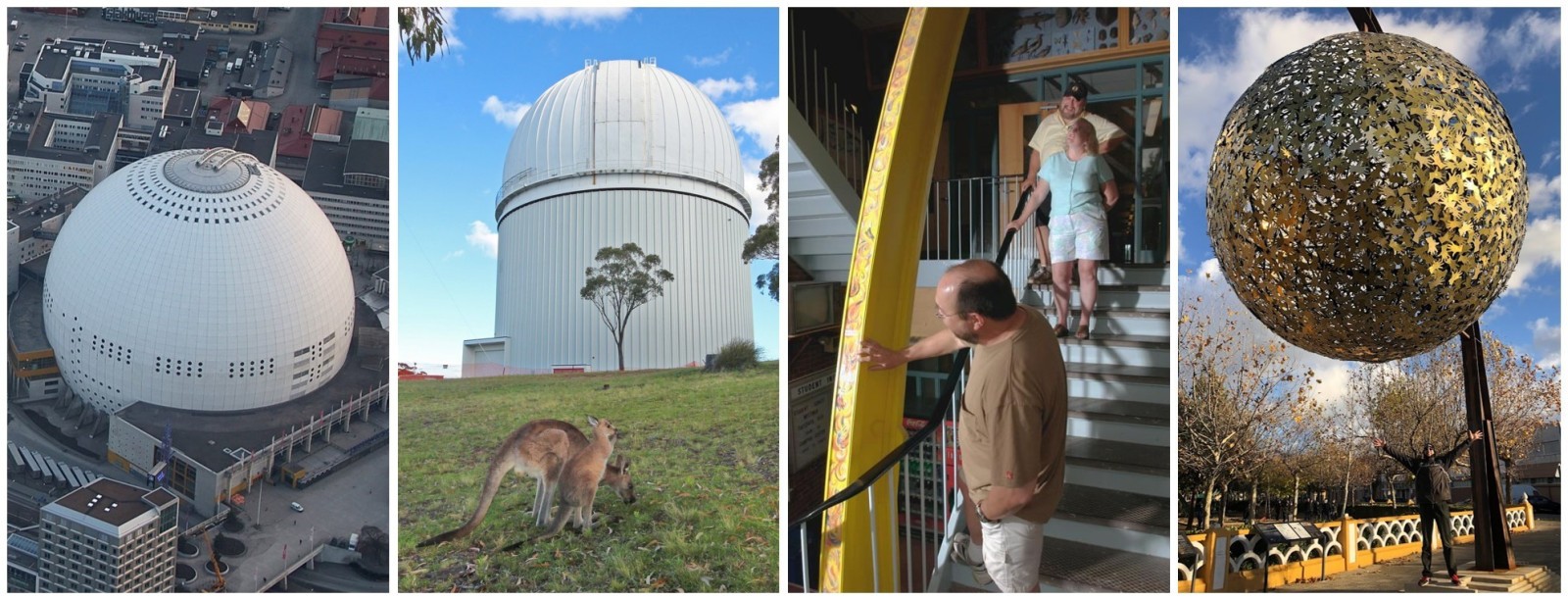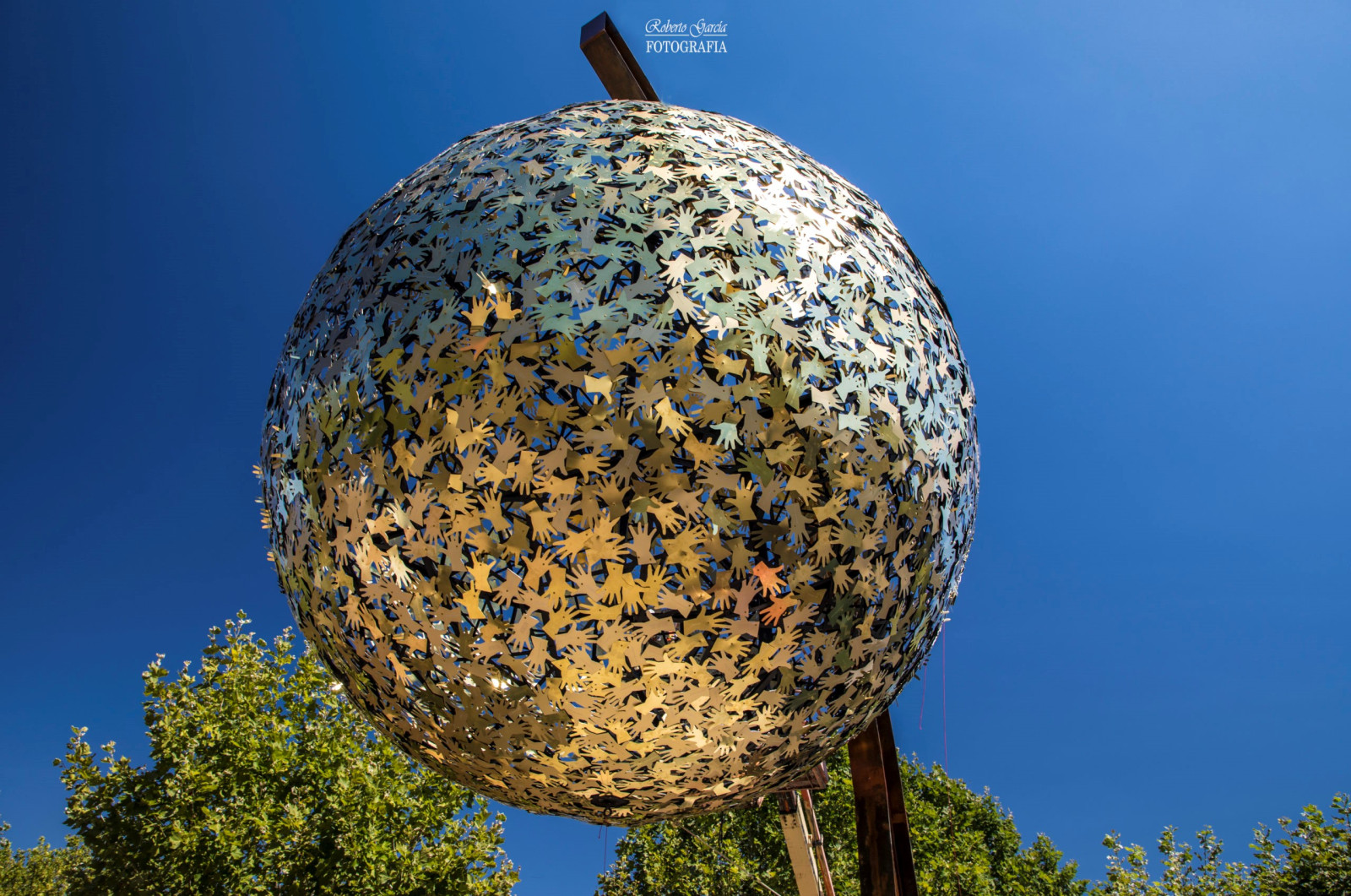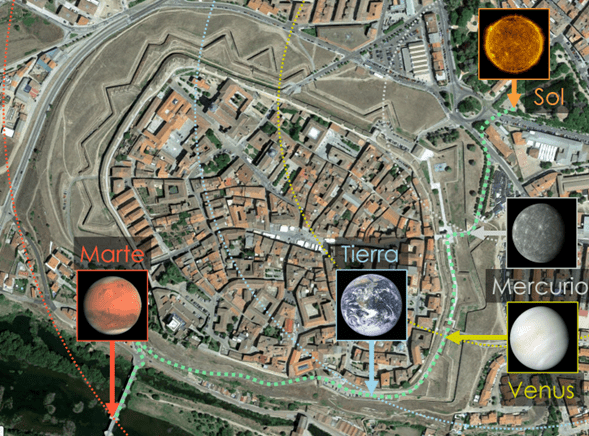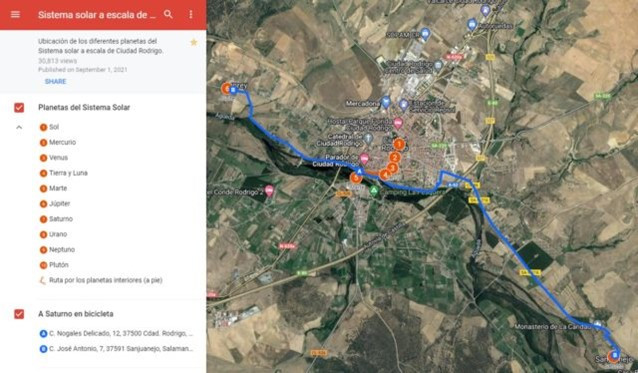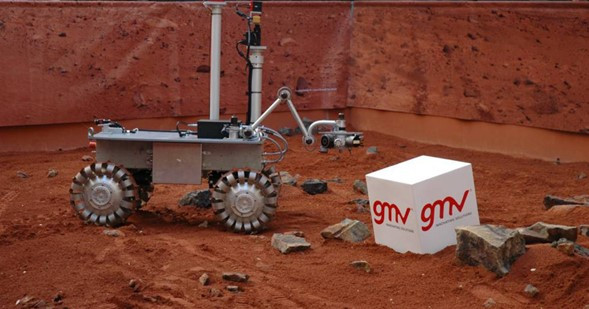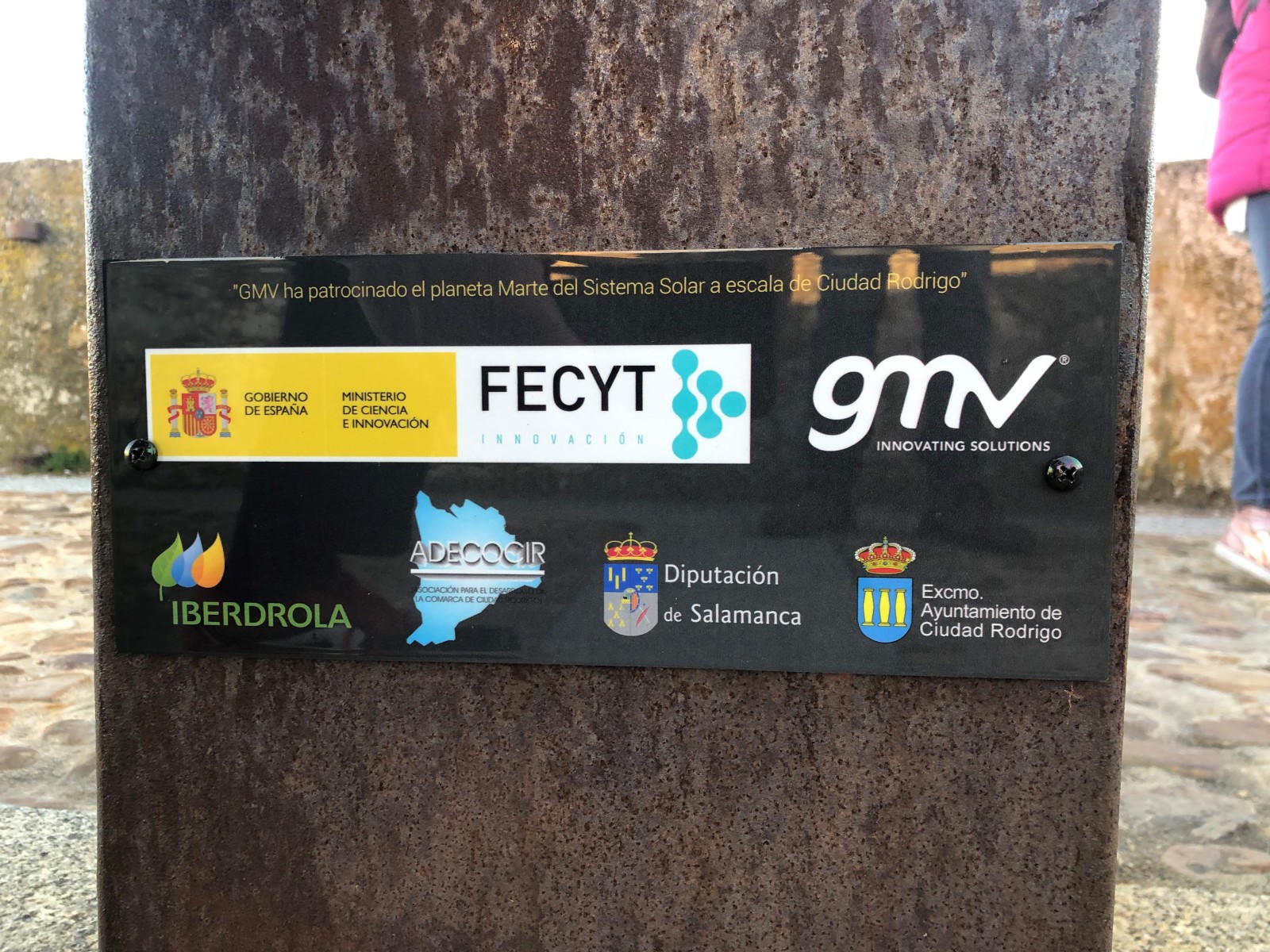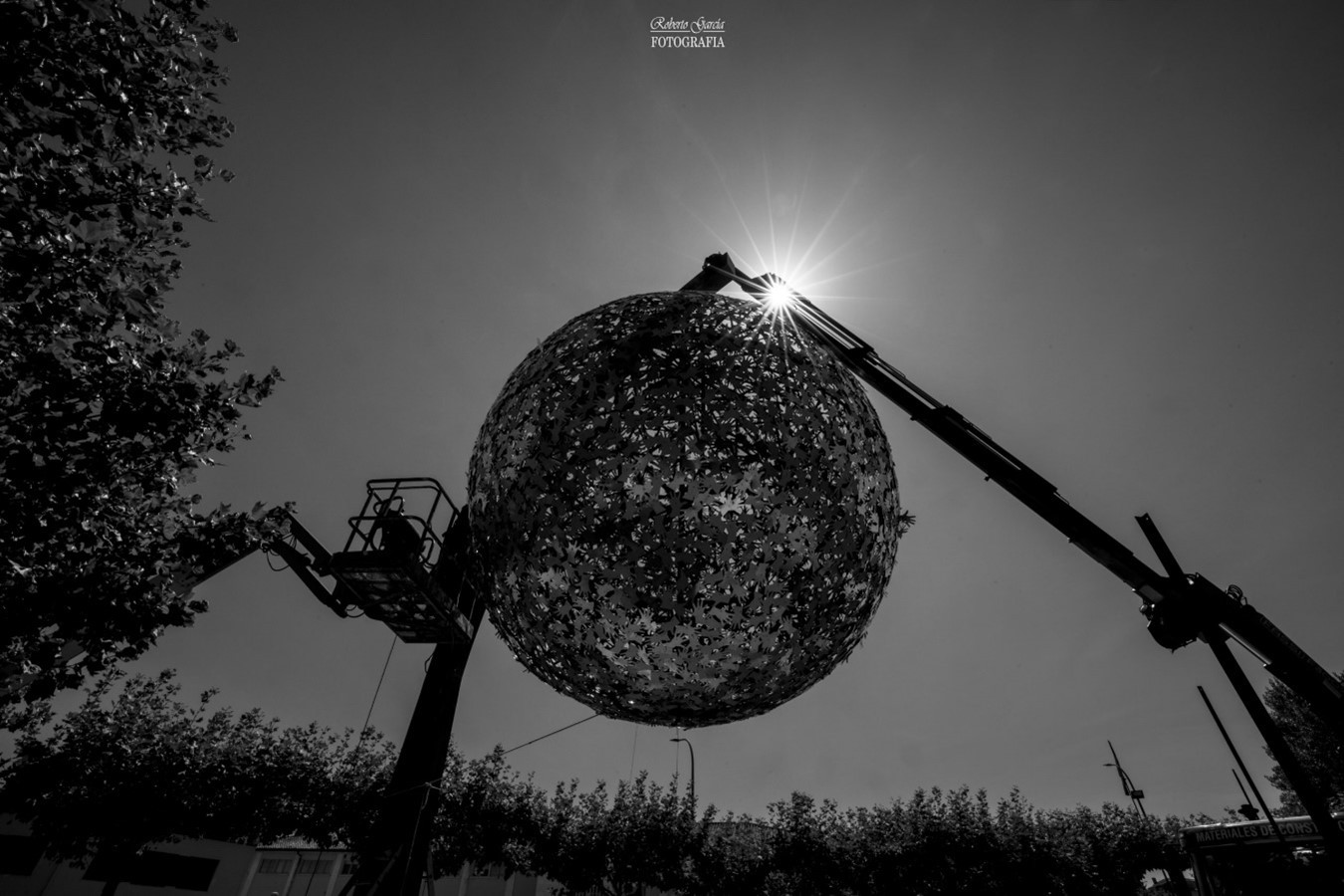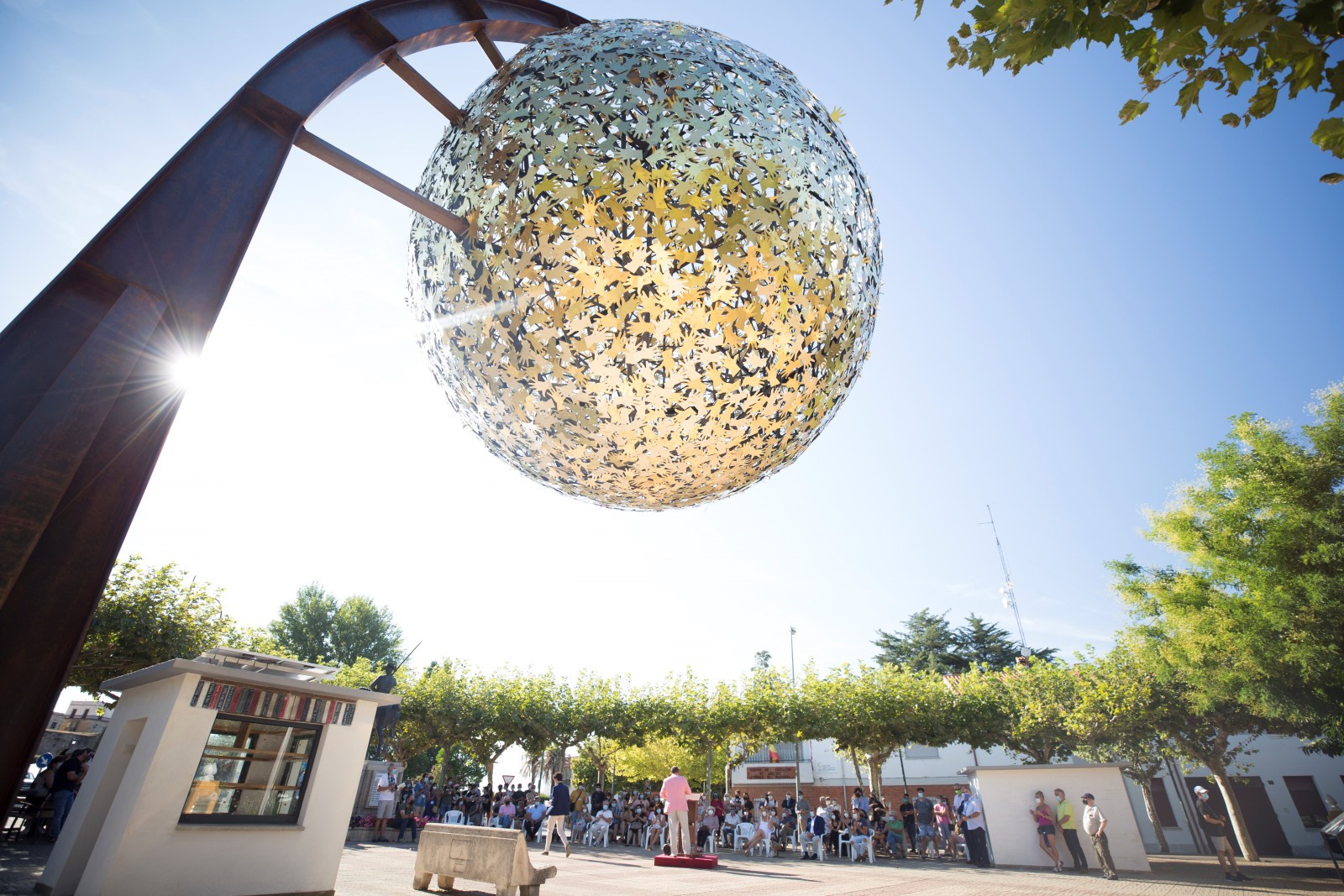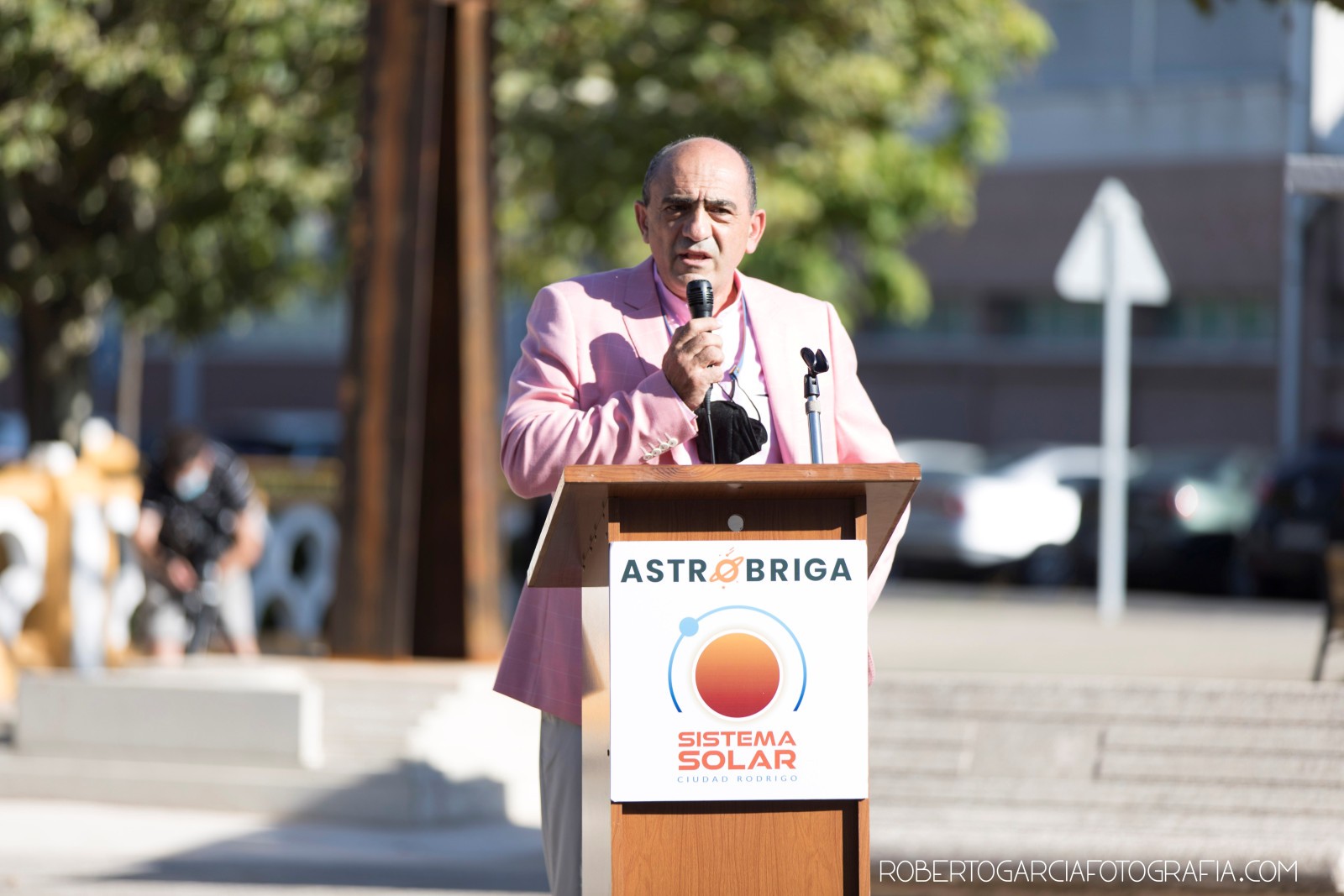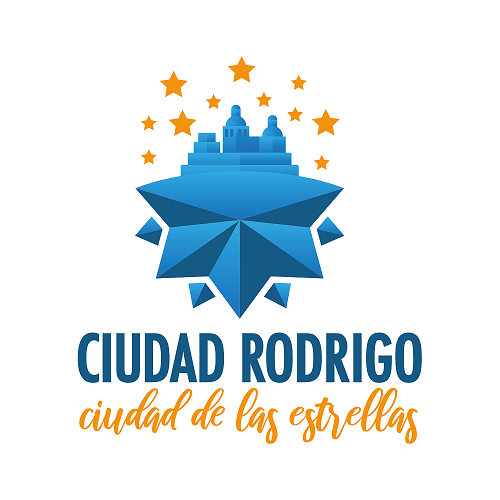Scale model of the Solar System in Ciudad Rodrigo
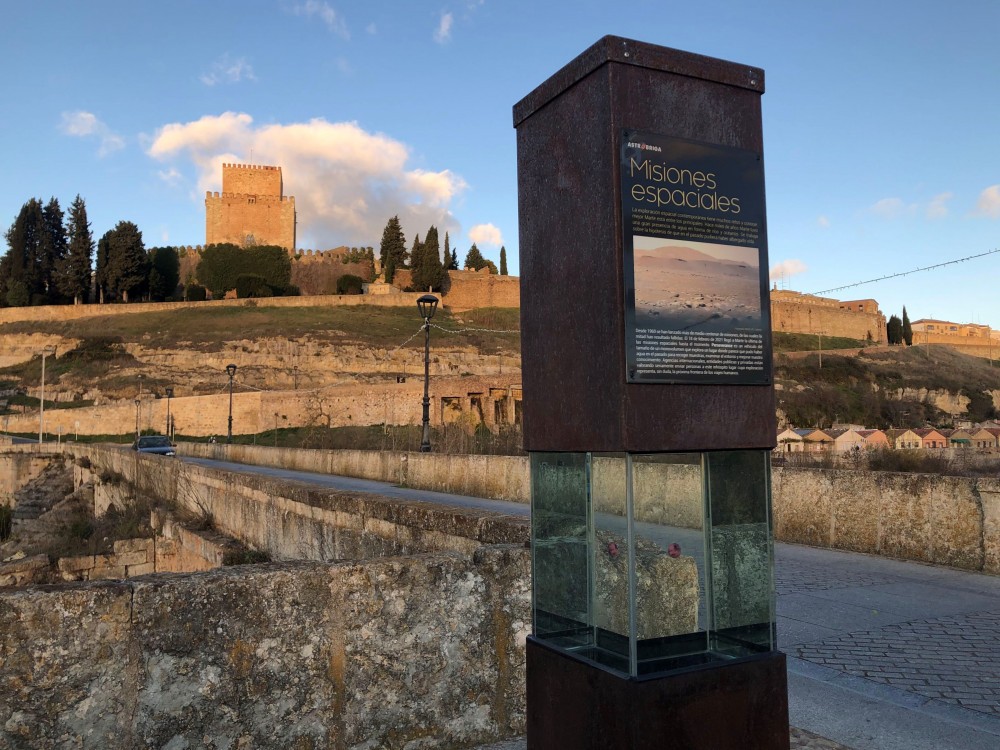
One of the many things I love about my company GMV is how willing they are (we are!) to support projects focused on science outreach.
At the end of 2020, I convinced GMV to collaborate with me on a second season of the podcast Enciérrate con la ciencia (Surround yourself with science), using server space we had already started using earlier in the year for a much more ambitious sponsorship adventure, which is the one I will be describing in this blog post...
The more science outreach, the better
Science is my passion, and I share it with the public on Twitter with the account Apuntes de ciencia (Notes on science), and through various associations such as Naukas, Ciencia con Tres enCantos, and Iberozoa. I write articles, give talks at schools and public events, and participate in podcasts and radio shows. In general, I try to stay up-to-date with the latest scientific discoveries so I can share them with others, especially those who are obsessed with astronomy like I am.
So you can imagine my excitement when I read that Astróbriga, the astronomical association of the Spanish city of Ciudad Rodrigo, was planning to build a scale model of our solar system in that already monumental location.
This project had it all: science outreach, astronomy, public participation, an educational component, and much more, all in a uniquely iconic setting! I fell in love with this project!
A question of scale
The purpose of scale models of our solar system is to help give us humans living on this third rock from the sun a better idea of the sizes of the various celestial bodies that surround us, and the enormous distances they travel through in their orbits.
Models of this type have been installed in various locations around the world, and there is even a Wikipedia page listing them.
However, Astróbriga had a unique ambition for Ciudad Rodrigo, which was to take advantage of the extraordinary context offered by that medieval city.
“We wanted to have a sun that was really a sun”, explains Nicolas Cahen, the president of Astróbriga, “but of course we couldn’t actually put a giant ball of hydrogen fusion in the street.”
However, instead of resorting to a smooth, yellow, boring version of the sun like the one usually seen in a solar system model, they created a sun that is original, imaginative, and inspirational, where a multitude of golden handprints made of brass and aluminum interconnect to form a huge metallic sphere. Its design symbolizes the fact that many small contributions can produce great achievements, while also alluding to the numerous instances of ancient hand-shaped cave paintings existing around the world.
The sun as the origin of everything. We are made of star stuff.
For the rest of the solar system’s elements, namely the eight planets, some representative moons (the earth’s moon, the four Galilean moons of Jupiter, Saturn’s moon Titan, and Neptune’s moon Triton), and the dwarf planet Pluto (take that Michael Brown!) a design was created using untreated steel pillars 2 meters in height, set into a reinforced concrete base. There is a gap in the center of the pillar, where each astronomical object is suspended in a glycerin matrix (with no supports, giving the sensation that they are floating in space), surrounded by safety glass. The pillar is topped with a series of LED lights powered by a small solar panel and battery system, so they can be illuminated at night.
Walking at the speed of light
Astróbriga wanted to install the solar system not just in the city of Ciudad Rodrigo itself, but also partly in the surrounding municipalities. This helped determine the scale selected, which is 1:290 million.
This gives the sun a diameter of 4.80 meters, which is quite large but still feasible. That scale also allows the inner planets to remain within the city, while the outer planets are found in other towns, or in iconic locations in the surrounding area. For example, Neptune is found at the exceptional Paleolithic archaeological site of Siega Verde, which features one of the largest collections of outdoor rock art in all of Europe, and which appears on the UNESCO World Heritage List, while the dwarf planet Pluto is located on the border with Portugal. Because of their elliptical orbits, there was some flexibility in terms of the exact locations given to each planet within the model. This allowed their locations to be adapted for purposes of drawing attention to local cultural heritage sites, while also making it easier to drive from one location to another and reducing the potential for vandalism.
But that’s not all: at the scale selected, the speed of light is just under 4 kilometers per hour, which is about the speed of a relaxed walking pace. This means that when visiting the scale model solar system in Ciudad Rodrigo… you can do it at the speed of light! It takes a little over 3 minutes to walk from the sun to Mercury, 6 minutes to reach Venus, and 8.5 minutes to arrive at planet Earth.
GMV colonizes Mars
When I first heard about this project in March of 2020, it had already been approved by all of the pertinent authorities, after quite a bit of discussion. Those authorities include the Salamanca Provincial Cultural Heritage Committee and the Castile and León General Directorate of Cultural Heritage. Approval by those bodies was required because Ciudad Rodrigo had already been declared as a Spanish Historic-Artistic Grouping more than 75 years ago, and its historic center inside the city walls has the status of a Spanish Asset of Cultural Interest.
Once those approvals were in place, the next step was to obtain the necessary funding.
Astróbriga launched a campaign to attract public donations called ¡Echa una mano! (Lend a hand!). Any person or entity that contributed at least €10 could have their name engraved on one of the brass hands that would be used to create the solar system’s sun. That campaign turned out to be a great success: almost 2,000 of the 2,941 hands that now make up the sun were funded in that way, covering a very significant portion of its construction costs.
I then started thinking about how GMV could make its own contribution. Fortunately, it wasn’t very hard to find a point of connection with our activities: Mars. GMV has a special interest in the fourth planet from the sun. Our Mars-like terrain has been used as the setting for innumerable guidance tests for prototype rovers, and for other robots designed to work in extreme conditions such as on oil platforms. It was also used as part of the GMV team environment, as an inspiring background for the large dining facility in its pre‑COVID location.
I came up with an idea, which I presented to GMV: to be the exclusive sponsor of the red planet’s pillar.
And I must say, it was not at all difficult to convince the people who manage the money, because just a few days later, GMV’s marketing department worked out the details with the directors of Astróbriga, and soon thereafter its board unanimously approved the arrangement proposed. A few weeks later, the agreement had been signed.
Nicolas Cahen, president of Astróbriga, thinks that the agreement formed with GMV was essential for solidifying the project’s success, because it served as a catalyst that inspired other entities to commit their support as well: the Science and Technology Foundation (FECYT) of Spain’s Ministry of Science and Innovation, the Ciudad Rodrigo Association for Development of Local Municipalities (ADECOCIR), the Salamanca Provincial Government, the companies Iberdrola and Acofarma, and the governments of Ciudad Rodrigo and other local municipalities. A multitude of more modest contributions were also received from local businesses.
Constructing the solar system
Once funding had been secured, the solar system was constructed during the summer of 2021, and it was inaugurated in early September of that year. This took place in the context of a larger Festival of Astronomy event.
There are many other astronomy associations that collaborate with Astróbriga, and they organized an impressive number of activities around this main event: conferences featuring talks by an extraordinary range of astronomy experts, sky viewing opportunities with numerous telescopes over the course of two nights, and art workshops for attendees of all ages.
There were also representatives of other collaborating institutions and companies, with GMV being represented by Miguel Ángel Molina, the company’s Director of Strategy and Business Development for Space Operations.
To Pluto and beyond
But this was only the beginning. With the solar system now active, work is being performed through Astróbriga on a series of educational tools to supplement those already in place.
We are expecting that the second phase will be completed in September 2022, and it has four elements: a series of signs mounted throughout the city to indicate the orbits of the inner planets; an augmented reality app for smartphones, which can be used while visiting the solar system model; a timeline 13.8 meters long, with each meter representing 1 billion years of the universe’s existence, and a short animated film that will be used to introduce visitors to the time-space magnitudes of the Milky Way and the Local Group of galaxies.
And that second phase will be followed by a third. There is already a proposal to organize an annual Astronomy Week for Ciudad Rodrigo and the surrounding area, and for constructing elements such as a parallel Earth and sculptures of constellations. Other elements may also be added to the main system, such as dwarf planets and the space probes that have travelled the farthest: Voyager 1 and 2, Pioneer 10 and 11, and New Horizons.
If you would like more information about the Scale Model Solar System project in Ciudad Rodrigo, you can take a look at this article I wrote in March.
What does all of this mean for Ciudad Rodrigo and for GMV?
The project’s main objective is to promote scientific culture in Ciudad Rodrigo and the surrounding municipalities. However, it also represents a fundamental tool that can form the basis for other science outreach events and educational activities (as just one example, a few days ago there was a race held in the form of an astronomy-themed obstacle course, with 16 groups of young people participating). It is also a way to help promote the area as a tourism destination, especially for the increasingly popular type known as astrotourism, taking advantage of the clear skies and highly regulated light pollution levels in the area. All of these objectives are being promoted under the slogan Ciudad Rodrigo, City of the Stars.
The media impact of the solar system’s inauguration was extraordinary.
For GMV, this sponsorship activity is part of our corporate social responsibility program. It is a form of active, voluntary contribution to the communities where we carry out our business activities, with a special focus on the areas of astronomy and science outreach, and an important emphasis on youth education.
Author: Juan Carlos Gil
